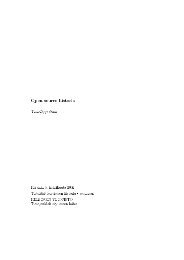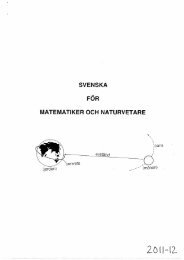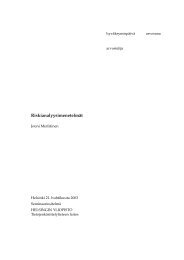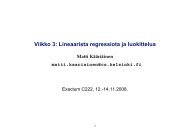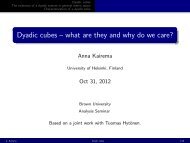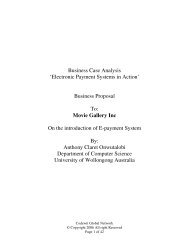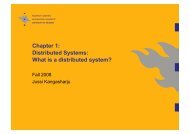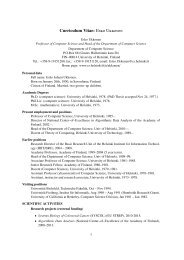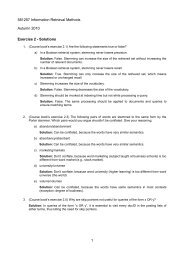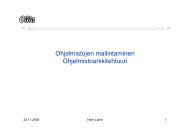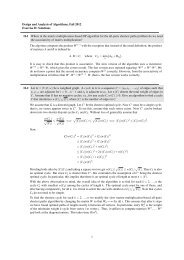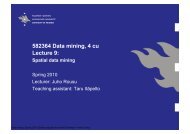Calculating trust in sensor networks
Calculating trust in sensor networks
Calculating trust in sensor networks
Create successful ePaper yourself
Turn your PDF publications into a flip-book with our unique Google optimized e-Paper software.
Figure 10: Different methods of calculat<strong>in</strong>g cha<strong>in</strong>s of <strong>trust</strong> <strong>in</strong> a route consist<strong>in</strong>g of alter-<br />
nat<strong>in</strong>g bad and good nodes.<br />
results, so both of them would be good candidates for def<strong>in</strong><strong>in</strong>g a cha<strong>in</strong> of <strong>trust</strong> out of<br />
<strong>in</strong>dividual reputations.<br />
4.4 Summary<br />
If a <strong>sensor</strong> network uses a <strong>trust</strong> management scheme, or <strong>in</strong> our case: uses a <strong>trust</strong>-based<br />
rout<strong>in</strong>g protocol, the nodes could aggregate <strong>in</strong>dividual <strong>trust</strong>s to form cha<strong>in</strong>s of <strong>trust</strong> from<br />
one node to another. This would allow nodes to identify packets from less <strong>trust</strong>worthy<br />
nodes near of far away. All this requires is a way of calculat<strong>in</strong>g <strong>in</strong>dividual op<strong>in</strong>ions <strong>in</strong>to one<br />
representative number. The previous chapter has proposed and compared some methods.<br />
One of these methods will be later simulated <strong>in</strong> the JSIM network simulator us<strong>in</strong>g the<br />
ATSR rout<strong>in</strong>g protocol described <strong>in</strong> Chapter 3.10.<br />
44




